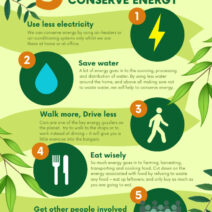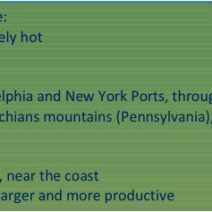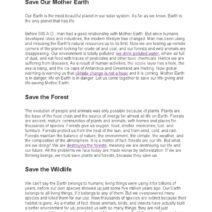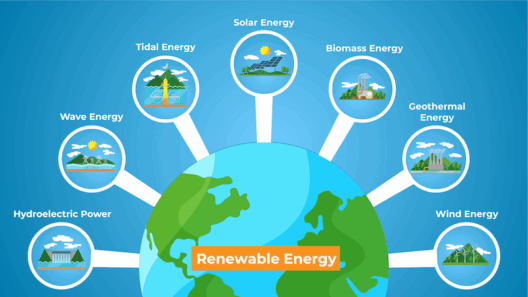Climate change, a pervasive phenomenon likened to a slow-moving tidal wave, is reshaping our planet’s landscape and atmosphere in ways that are both insidious and profound. This article delves into the intricate mechanisms behind climate change, elucidating how these processes unfold and the consequent impacts on our environment and human life.
At its core, climate change is driven by an elaborate interplay of natural and anthropogenic (human-induced) factors that disrupt the delicate balance of Earth’s climate system. To grasp its nuances, one must first understand the fundamental science of climate dynamics. Central to this discourse is the greenhouse effect, akin to a thick, insulating blanket wrapped around the Earth. Solar radiation penetrates this blanket, warming the planet, while greenhouse gases such as carbon dioxide (CO2) and methane (CH4) trap some of this heat, preventing it from escaping back into space. This intricate dance maintains a temperature conducive for life, yet, as activities proliferate—especially fossil fuel combustion and deforestation—the blanket thickens to an alarming extent, exacerbating global warming.
The increase in greenhouse gas concentrations is not merely a theoretical concern; it manifests in tangible alterations to our environment. One vivid example is the warming of the oceans, which act as both a buffer and a climate regulator. The oceans absorb over 90% of the excess heat generated by greenhouse gas emissions, resulting in marine heatwaves, coral bleaching, and altered marine biodiversity. A vast underwater metropolis that once flourished is now subject to extinction—an eerie testament to the fragility of life in changeable waters.
In addition to oceanic changes, climate change wields a powerful influence on weather patterns, creating a new reality fraught with unpredictability. Storms that were once familiar now bear the hallmarks of severity and irregularity. Hurricanes, for instance, are acquiring a ferocity fed by warm ocean waters, leading to catastrophic impacts on coastal communities. The metaphorical firestorm of destruction unfurls not just in terms of property loss, but also the rippling effects on mental health, economic stability, and social cohesion.
Beyond extreme weather, the implications of climate change extend to water resources and food security. Glaciers—once the majestic crowns adorning the mountains—are receding at a staggering rate, shrinking the freshwater reserves that billions rely on. Imagine these massive ice structures, now ghostly reminders of a past climate, retreating like an ancient warrior, leaving behind a parched land in dire need of sustenance. As precipitation patterns shift, agricultural zones become erratic, with some experiencing droughts while others suffer from deluges. The impact on global food systems is profound, leading to crop failures, increased prices, and escalated competition for dwindling resources.
Furthermore, the repercussions of climate change are inextricably linked to public health. As ecosystems become destabilized, the transmission dynamics of infectious diseases shift, exposing populations to new threats. Warmer temperatures facilitate the proliferation of vectors such as mosquitoes, known to carry diseases like malaria and dengue fever. This metamorphosis of our planet’s atmosphere into a breeding ground for pathogens is likened to opening Pandora’s box, unleashing unforeseen challenges. Public health systems, often ill-equipped to handle such multifaceted crises, face increasing pressure to adapt and mitigate these emerging threats.
The social implications of climate change are equally alarming. Vulnerable populations, often those with the least capacity to adapt, find themselves at the frontline of climate-induced hardships. Communities may become climate refugees, uprooted by rising sea levels and extreme weather phenomena, forced to navigate a labyrinth of displacement and chaos. This unsettling reality evokes an image of a once-thriving community, now disbanded like leaves in the wind, as families scatter in search of safety and stability. The interplay of climate and social inequities underscores the urgent need for systemic changes that prioritize resilience in marginalized communities.
In dealing with these multifaceted challenges, the international community is called to action. Climate change mitigation and adaptation strategies must be multifarious and inclusive, aiming not just at reducing emissions but also at empowering communities to withstand the realities of a changing climate. The Paris Agreement serves as a beacon of hope, fostering collaboration among nations to limit global warming to well below 2 degrees Celsius above pre-industrial levels. This noble endeavor requires commitment, innovation, and perhaps most importantly, a collective acknowledgment that the future of our planet hinges upon our current choices and actions.
In conclusion, comprehending climate change demands an understanding of its complex mechanisms and far-reaching impacts. It is not merely an environmental issue but a tapestry woven with threads of science, morality, and human experience. As we move forward, the imperative remains clear: we must act decisively, informed by a recognition that we are stewards of our planet. Only then can we hope to unravel the intricate knots of challenges it presents, transforming our trajectory toward a more sustainable and equitable future.




